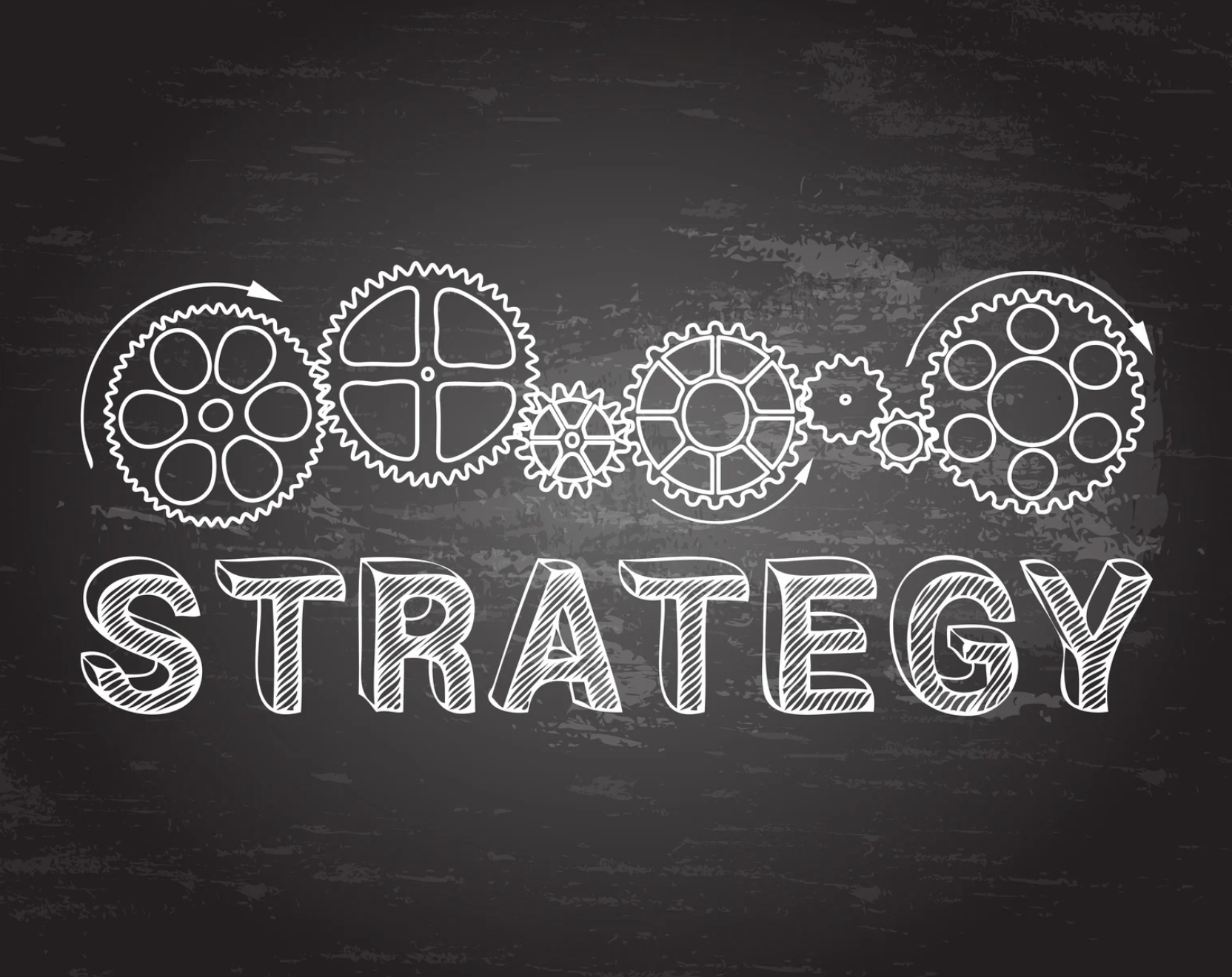An offensive strategy consists of a company’s actions directed against the market leaders to secure competitive advantage. Competitive advantage may be achieved as a cost advantage or differentiation advantage or resource advantage. An offensive strategy must be creative so that competitors cannot easily thwart it.
What is Offensive Strategy?
In competitive strategy, an offensive strategy would be geared towards targeting or taking share from the competitor’s product. The product or market strategies are some things that companies do to capture more market share, increase market share or at least prevent the competitor from increasing theirs. For a product strategy, the company researches the strengths and weakness of its product and the competitor’s product. This allows the company to improve its product without fear of the competitor copying their improvements and using them to take share from the company.
Example of an Offensive Strategy
In concrete forming market, the major players are TTH, Ltd, Decro Prisma, and Columbus McKinnon. Based on the Geo market research analysis of the concrete forming industry, it is clear that TTH is the market leader. TTH’s product strategy of offering a lower-priced alternative, Decro Prisma, is a defensive strategy against the changes in competition (i.e. changing consumer demand, increase in competition).
To counter or increase its market share against TTH’s product strategy, Decro Prisma must employ an offensive strategy that will increase the demand for its product. Decro Prisma’s offensive strategy should target TTH’s product since the company will remain competitive in the future if the demand for its product is sufficient to enable it to face competition.
- Elements of an Offensive Strategy
Companies must compete to implement an offensive strategy. The successful company must understand what drives customer demand, competitive moves, trends and standards. A company can implement an offensive strategy by using the following elements.
Innovative advertising and selling – A company must offer innovative advertising and selling strategies to counter competitive strategies, new trends and standard practices of its competitors.
– A company must offer innovative advertising and selling strategies to counter competitive strategies, new trends and standard practices of its competitors. Pursue changes to establish new standards – A company must pursue changes to establish new standards, for example, changes are incorporated to the product, the market, the channels and the concept.
– A company must pursue changes to establish new standards, for example, changes are incorporated to the product, the market, the channels and the concept. Product differentiation – A company competes on the basis of the uniqueness of the product, since the consumer does not want to repeat purchases.
– A company competes on the basis of the uniqueness of the product, since the consumer does not want to repeat purchases. Timing offensive strategy – A company must use the timing of its offensive strategy to its advantage to achieve success. To strike at the right moment when the competitor is vulnerable, the company must have a keen insight into trends, patterns and developments in the industry. Successful companies are always in a state of readiness to respond to the competitor’s next move.
– A company must use the timing of its offensive strategy to its advantage to achieve success. To strike at the right moment when the competitor is vulnerable, the company must have a keen insight into trends, patterns and developments in the industry. Successful companies are always in a state of readiness to respond to the competitor’s next move. Direct attack – A company can counter the competitive advantage of its competitor by directly attacking it. This strategy is risky as it may result in a general warfare.
– A company can counter the competitive advantage of its competitor by directly attacking it. This strategy is risky as it may result in a general warfare. Capture markets from competitors – A company can use technology to capture market share from its competitors. The technology must be superior to that of competitors’. The company may also make strategic alliances with other companies to gain a competitive edge.
– A company can use technology to capture market share from its competitors. The technology must be superior to that of competitors’. The company may also make strategic alliances with other companies to gain a competitive edge. New product and serve markets – A company can introduce a new product and new services in new markets to increase market share. The company may also introduce new services to existing markets to compete against competitors.
– A company can introduce a new product and new services in new markets to increase market share. The company may also introduce new services to existing markets to compete against competitors. High quality and service – A company can emphasize the importance of the quality of the product and the level of service to compete against competitors.
- Recommendation for Offensive Strategy
For a company that wants to implement an offensive strategy can adopt the following measures.
- Conduct a SWOT analysis –SWOT analysis is the most important tool used by companies for analyzing the market potential, competitive advantage, and your corporations strengths and weakness.
- Conduct a Geo economic research – By conducting geo economic analysis of competitive markets, a company will be able to gain a competitive advantage against its competitors. This analysis provides deep understanding of the market, consumer behavior, customer perception, changes in technology, cost of raw materials, currency fluctuations, risk perception and the competitive environment.
- Understand your competitors – Companies must understand their opponent by detailing different strategies that are adopted by their competitors in order to implement your offensive strategy.
- Assess potential threat to your company – The company must assess potential threats from new entrants, substitute and buyer’s power and government intervention.
- Research and analyze changes in consumer demand – The company must research and analyze changes in consumer demand by conducting a Value Chain Analysis and a McKinsey 7 S Framework Analysis.
- Research and analyze competition – The company must conducted a competition analysis to assess competition from the following: substitute products, customers, suppliers, substitute supply and new entrants.
- Next, evaluate the market potential – The company must evaluated the market potential of the current market, current product, and future product. Competitive advantage must be identified.
- Conduct SWOT analysis of competitors – The company must assessed the competitive advantage of its competitor from the following: cost, market share, relevant expertise, consumer perception, quality of products, services and customer satisfaction.
- Identify corporate strengths and weaknesses – The company must conducted a SWOT analysis of the overall corporation and specific business units. Strengths and weaknesses must be identified, and the company must use its strengths to design a stronger offense.
- Plan and implement offensive strategy – The company must conduct a SWOT analysis of the offensive strategy before implementing it. The company must follow the part of the 4 P’s in advertising such as; product, price, place and promotion, in order to maintain the competitive advantage.
- Monitor and control – The company must assess the growth of the corporation, evaluate the market potential and consumer responses to the products and services that are designed to implement the offensive strategy.
- Review competitive analysis – The company must review the competitive analysis from time to time.
- Examine and review – The company must examine and review the design of your offensive strategy by conducting SWOT analysis.
- Conclusion
Organizations must be aware of the “life cycle” of a product, according to its importance to the customer. Each product has a product life cycle that can be useful to managers in formulating strategy. A five stage process of the product cycle is identified in the text. The life cycle of a product consists of five stages: introduction, growth, maturity, decline, and evaluation. The five stages of a product’s life cycle are: Introduction – the first buyers of a product are usually the first users, or innovators. The product must be attractive to them in order to become accepted by the market.
– the first buyers of a product are usually the first users, or innovators. The product must be attractive to them in order to become accepted by the market. Growth – when the product is recognized as a mass-market product, it starts to grow. The company should promote the product and the product should be available to a large number of people.
– when the product is recognized as a mass-market product, it starts to grow. The company should promote the product and the product should be available to a large number of people. Maturity – Over a period of time, when sales are not expected to grow, the product is matured. The company should extend the product life cycle of the product.
– Over a period of time, when sales are not expected to grow, the product is matured. The company should extend the product life cycle of the product. Decline – When sales start to decline, the product is declining.
– When sales start to decline, the product is declining. Evaluation – just as a product is being introduced, it is evaluated. At this point, the manager can either decide to continue or discontinue the product. It depends on the marketing situation, such as consumer acceptance of the product and the availability of substitutes, among other factors.
Another option for companies to innovate is to Differentiate themselves from the competitor. They can compete on value added or on an improved attribute to outshine their competitors. Companies can differentiate itself through a breakthrough or a life style change.
A breakthrough is an improvement on a product or service in a unique way of its nature that is not matched and can not be matched by its competitors.
A life style change is a modification of a product or service’s use that is not matched and can not be matched by its competitors.
Competition strategy differs from company to company, some companies compete on cost, some on quality, and others on service.
Product differentiation should be achieved by the firm through product improvements, product development, and brand image. The firm can differentiate its product by providing a unique product with product design, product performance, product features, product guarantees, and a brand image.










